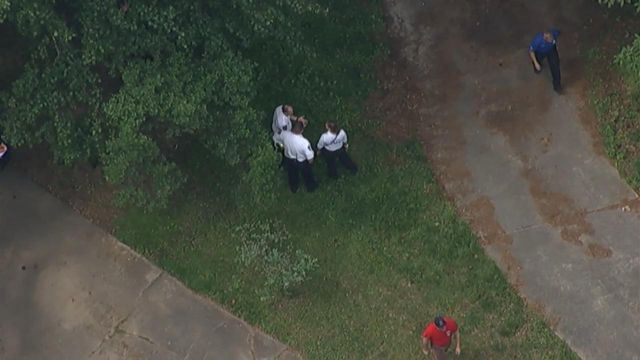With needs up, Wake officials hope new outreach programs will boost kids' attendance, grades

As student attendance drops and behavioral health challenges rise, two new Wake County programs are designed to connect struggling Wake students and their families with coaching, health care and social services.
Wake County health and education leaders announced the ongoing pilot programs during a news conference Tuesday at Southeast Raleigh Elementary School.
The Neighborhood Networks program places a social worker in each of five different elementary schools: Adams, Forest Pine, Forestville, North Ridge and Southeast Raleigh. The Student Engagement Team program uses coaching to help families overcome challenges and connect them with outside services and training. That program is at two middle schools (Centennial and Durant) and two elementary schools (North Garner and Walnut Creek). Each program has so far served dozens of families.
At their core, the programs connect families with services via a community fixture — their child’s school. Leaders say that makes it easier for families to get help for things like stable housing, employment opportunities or health care. In turn, that can help stabilize a student’s home life and help them get to school more often, leaders said.
“We know that students don't just check their struggles at the door when the school bell rings,” Wake County Commissioner Matt Calabria said. “We also know that our teachers, including our school social workers, counselors, psychologists, and all of our educators and school staff are doing amazing work, despite scarce resources and extremely heavy demands on their time, high case loads, and often difficult headwinds that they faces as educators.”
While leaders wanted to start programs like this even before the Covid-19 pandemic, challenges brought by the pandemic and remote learning increased the sense of urgency and what was ultimately needed.
“We have definitely seen an increased need across the board,” said Juanita Velazquez, assistant principal at North Garner Middle School. That include students of all ethnicities and income levels, she said.
Across North Carolina and the nation, millions more students are “chronically absent” from school since the return from pandemic-prompted remote learning in 2021.
The percentages are up in Wake County, too, although the county tends to do better than the state.
Before the pandemic, about 12% — one in eight — of students were chronically absent from school. Last school year, 22.5% of Wake students were chronically absent, or between one in five and one in four — or about 36,000 students.
There’s no data yet on the success of the pilot programs, but leaders are collecting data points on families’ circumstances before and after receiving help: Have the student’s grades improved? Has their school attendance improved? Did the family move from homelessness to stable housing? Did the family move from a crisis position into a more stable position?
Until then, leaders also point to anecdotes. Albert McMillan, supervisor of the Neighborhood Network, said recently a family at one school went from homeless and unemployed to having stable housing via the help of a school social worker. He said the school has also helped set up families with interpreters.
Nannette Bowler, director of Wake County Health and Human Services, recalled a mom who was struggling to get Medicaid and who showed up to a school food pantry, where a social worker was helping families. The mom was having kidney problems and was worried she wouldn’t be able to care for her children if her condition got too bad. She ended up getting Medicaid and then treatment, Bowler said.
Wake County leaders relayed the story of one single mom, who wished to remain anonymous, who said that some parents are often afraid to ask for help. In a video distributed to new outlets that translated the mother’s Spanish into English, the mother said some parents might fear a social worker. But her oldest daughter was sick and her daughters were missing a lot of school. She didn’t know anyone and was focused on doing well at her job that she didn’t realize the absences were piling up. The school reached out and helped her access Medicaid for her daughter and showed her other programs that could help her.
“It’s not about telling them [families[ what to do,” Bowler said. “It’s about seeking to understand their situation and working with them to work through it.”
Students who have stable home lives do better in school and in life, School Board Member Toshiba Rice said. Schools should do what they can to support families’ non-academic needs. That can help eliminate disparities between students of different demographic groups. “Programs like these have the potential to help us reach that goal by making a significant and lasting impact on the lives of students and families who are facing serious challenges.”
The programs are funded using $3.25 million in American Rescue Plan dollars — temporary federal pandemic relief dollars — through December 2026.
Information for this article was contributed by WRAL multimedia journalist Destinee Patterson.











